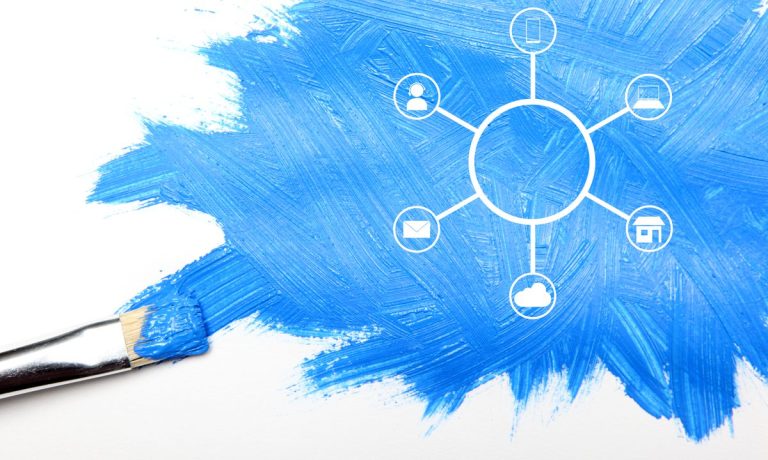
If the last 20-plus months have taught us anything, it’s to expect technological change to be faster and more profound than before, with payments connecting almost all of it somehow.
It’s getting more difficult to remember, but pre-pandemic, technology change operated on a longer timeline, and the forms it took were less about consumer experience than sheer utility.
In an interview, Nikhil “Nik” Sathe, chief technology officer at Blackhawk Network, called it “a tale of two different parts of the economy, where payments online had moved very quickly into digitization, ” offering many choices and enabling seamless or obstruction-free experiences. He added that physical retail had not evolved as fast, lagging in the adoption of many of these approaches.
The edge eCommerce enjoyed over physical retail during the most restrictive part of the lockdown didn’t last, as physical did the digital shift. As Sathe said, “in the payments industry, or really in the retail industry more broadly, there was a significantly more rapid advance in [the past one year than in any period I can remember], where everyone had to adopt these omnichannel experiences.”
“[Businesses] stopped trying to justify, ‘Is it worth investing in these,’” Sathe said. “It was necessary for their survival as lockdowns [went into effect] around the world [and how people shopped changed overnight].”
That’s opened the way for deeper adoption of tech that in many cases is already available, but for a variety of reasons saw slow uptake until a global health crisis created a need.
See also: Inventory Shortages Could Make Holiday 2021 the Year of the Gift Card
Omnichannel Steals the Show
As Sathe said he sees it, the move to omnichannel is one of the areas having immense influence now and carries even larger implications going forward.
“Omnichannel experiences are probably going to be the single biggest long-term impact,” from the pandemic era, Sathe said. “The same types of capabilities that users have come to expect in the digital world are now permeating both the digital and the physical and really connecting the two in a seamless payments and shopping experience.”
Certain tech stands out as having made pandemic payments possible, and for Sathe, the QR code not only fits that description but has further potential for digital payments.
“QR was certainly one area where technology repurposed in some way to bridge that gap between the digital world, your phone and the physical world,” he said.
Buy now, pay later (BNPL) also makes Sathe’s list of transformational tech of the 2020-2021 timeframe, and he said he sees its next move as more of a focus on in-store than eCommerce.
“A lot of the buy now, pay later folks are trying to figure out how they become more relevant in the physical world, not just in the digital world [where they got their start]. Physical retail and grocery represent more habitual everyday spend, which again helps these providers build credibility and loyalty and deepen the relationships with consumers.”
Sathe said that from QR codes to BNPL to gift cards, the forms digital payments take are going to be critical for improving consumer experiences.
Read also: In-Store Checkout Set to Drive Buy Now, Pay Later Growth
Loyalty, Partnerships and Esoteric Tech
On the more exotic side of money, Sathe said he is watching the cryptocurrency sector with interest, thinking how it might even come to bear on Blackhawk’s business down the road.
“The way that rewards used to be characterized was in terms of discounts, or some sort of cash back, or points that you could use to spend on other things,” he said. “I think one of the things that we’re seeing is the emergence of digital assets … like NFTs.”
Calling nonfungible tokens (NFTs) “esoteric from a technical perspective,” Sathe said he does see their commercial value.
“You can think about them as a unique digital experience that you can get from a brand,” he said. He noted such experiments by Roblox, Nike and Louis Vuitton.
“To me that’s sort of the next evolution of loyalty, which is providing your best customers with unique capabilities, as opposed to just monetary discounts,” he said. “I think monetary discounts will [also continue to evolve, with] people innovating on new ways to earn and burn rewards points or other forms of stored value.”
Also, on the evolutionary trail with BNPL and NFTs are digital currencies, which Sathe said are hitting the peak of the “hype cycle” and may soon move from being speculative investments to something people will actually spend.
“Now, everything is sort of coming together, with the economic necessity for people to finance things or spread their payments out over time combined with mobile payments technologies, and companies like Blackhawk that are enabling those use cases to become a reality in physical retail.”
As always, choice of partners will matter.
“I think [as an industry], we have to standardize and simplify [integrations] because if every retailer now has to go figure out how to integrate with all these digital wallets, all these buy now, pay later providers and all of these potential alternative currencies, I think that that’s just going to create more cost and less traction. Companies like Blackhawk have an opportunity — and almost a mandate — to step in and help integrate all of these use cases and simplify things for brands.”
See also: Blackhawk Network, Magstar Bring Expanded Digital Payment Acceptance to Retailers